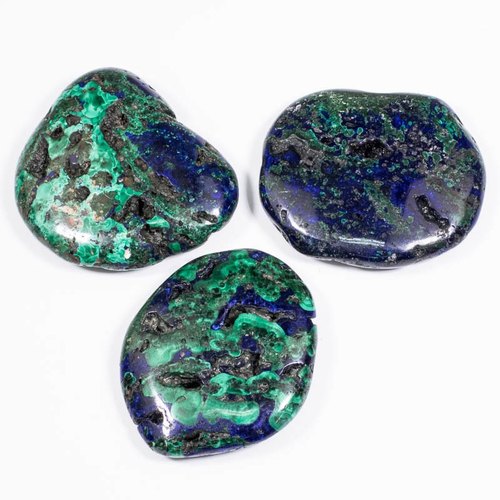According to lithotherapists, azurite is a remedy for all diseases, it is enough just to apply a stone to a sore spot. It is useful for hormonal problems, hypertension. Like any blue stone, azurite relieves eye strain and is used as a prophylactic agent for decreased vision. Azur-malachite has even greater healing power. It is placed on the “third eye” area (that is, in the middle of the forehead) to harmonize the emotional state of a person.
Horoscope
Azurite is most suitable for Taurus, Libra and Sagittarius.
History
The term “azurite” was introduced into use in 1824 by the French scientist-mineralogist Francois Bedan. Despite the fact that the stone has been known since ancient times, for a long time, it was confused with a similar mineral – lapis lazuli. So, for example, Aristotle in his writings described the properties of these two gems, not noting any differences between them.
In the Middle Ages, lapis lazuli and its “double” azurite were actively used to create natural deep blue paint. Moreover, the latter was used even more often, because its processing required much less time and effort. The disadvantages of azurite paint have already been revealed in our time. It turned out that with prolonged exposure to air and under the influence of moisture, the mineral gradually turns into malachite. It is this physical property of the stone that explains the predominance of green in the paintings of ancient artists.
The largest azurite in history is called the “Singing Stone”. A nugget weighing more than 4.5 tons was found in the United States and is today exhibited at the American Museum of Natural History in New York.
Interesting facts and features
The term “azurite” was introduced into use in 1824 by the French scientist-mineralogist Francois Bedan. Despite the fact that the stone has been known since ancient times, for a long time it was confused with a similar mineral – lapis lazuli. So, for example, Aristotle in his writings described the properties of these two gems, not noting any differences between them.
In the Middle Ages, lapis lazuli and its “double” azurite were actively used to create natural colors of deep blue color. Moreover, the latter was used even more often, because its processing required much less time and effort.
The disadvantages of azurite paint have been revealed already in our time. It turned out that with prolonged exposure to air and under the influence of moisture, the mineral gradually turns into malachite. It is this physical property of the stone that explains the predominance of green in the paintings of ancient artists.
The largest azurite in history is called the “Singing Stone”. A nugget weighing more than 4.5 tons was found in the United States and is today exhibited at the American Museum of Natural History in New York.

